Gigabyte Z77-HD4 Review
by Ian Cutress on May 19, 2013 10:00 AM EST- Posted in
- Motherboards
- Gigabyte
- Z77
Rightmark Audio Analyzer 6.2.5
In part due to reader requests, we are pleased to include Rightmark Audio Analyzer results in our benchmark suite. The premise behind Rightmark:AA is to test the input and output of the audio system to determine noise levels, range, harmonic distortion, stereo crosstalk and so forth. Rightmark:AA should indicate how well the sound system is built and isolated from electrical interference (either internally or externally). For this test we connect the Line Out to the Line In using a short six inch 3.5mm to 3.5mm high-quality jack, turn the OS volume to 100%, and run the Rightmark default test suite at 48 kHz, 96 kHz and 192 kHz. We look specifically at the Dynamic Range of the audio codec used on board, as well as the Total Harmonic Distortion + Noise.
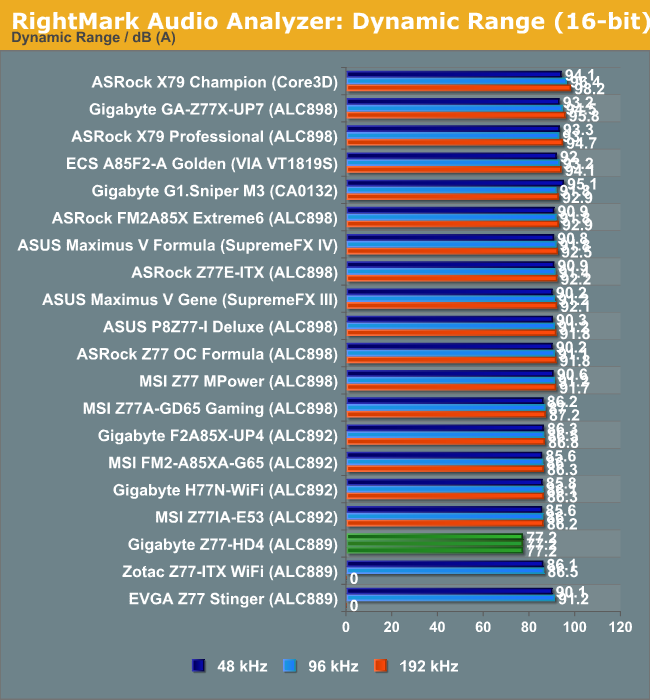
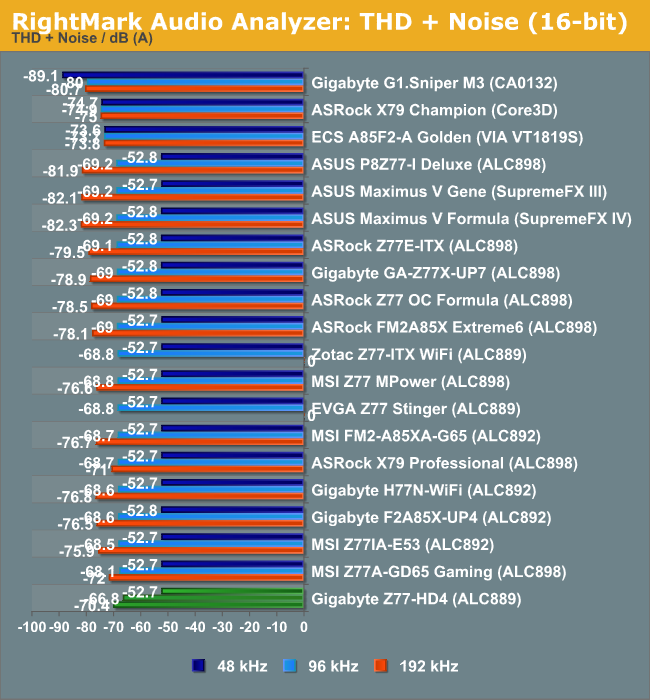
With the price of the board, we get one of the cheaper Realtek audio options. It performs worse in our testing than the ALC89x and above, but is able to pass our 192 kHz test unlike the ALC889 mITX versions.
USB 3.0 Backup
For this benchmark, we run CrystalDiskMark to determine the ideal sequential read and write speeds for the USB port using our 240 GB OCZ Vertex3 SSD with a SATA 6 Gbps to USB 3.0 converter. Then we transfer a set size of files from the SSD to the USB drive using DiskBench, which monitors the time taken to transfer. The files transferred are a 1.52 GB set of 2867 files across 320 folders – 95% of these files are small typical website files, and the rest (90% of the size) are the videos used in the WinRAR test.
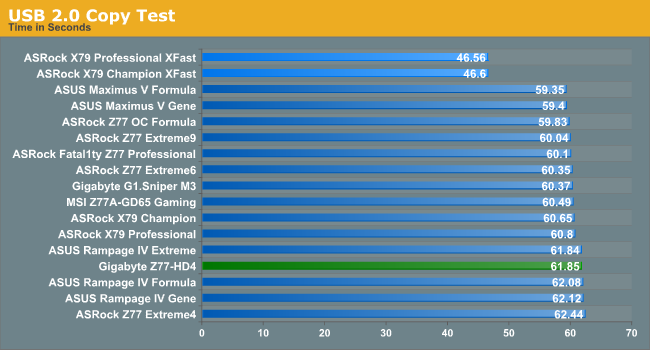
USB 2.0 performance is middling, on the wrong side of 61 seconds but only a fraction worse than the top non-XFast score.
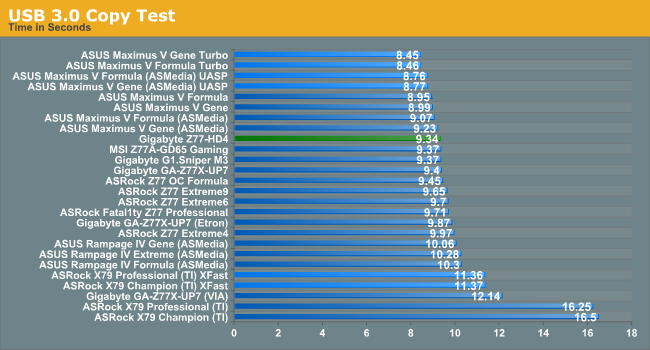
By contrast, the USB 3.0 performance is nearer the sharp end, despite sequential write speeds not being the best.
DPC Latency
Deferred Procedure Call latency is a way in which Windows handles interrupt servicing. In order to wait for a processor to acknowledge the request, the system will queue all interrupt requests by priority. Critical interrupts will be handled as soon as possible, whereas lesser priority requests, such as audio, will be further down the line. So if the audio device requires data, it will have to wait until the request is processed before the buffer is filled. If the device drivers of higher priority components in a system are poorly implemented, this can cause delays in request scheduling and process time, resulting in an empty audio buffer – this leads to characteristic audible pauses, pops and clicks. Having a bigger buffer and correctly implemented system drivers obviously helps in this regard. The DPC latency checker measures how much time is processing DPCs from driver invocation – the lower the value will result in better audio transfer at smaller buffer sizes. Results are measured in microseconds and taken as the peak latency while cycling through a series of short HD videos - under 500 microseconds usually gets the green light, but the lower the better.
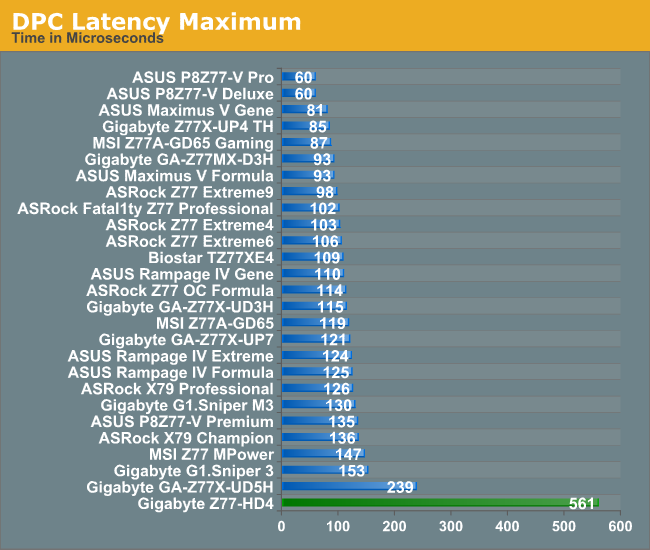
A major realisation of having that un-optimised BIOS is perhaps shown best in the DPC. To start, with the default install, the monitoring features of ET6 causes the DPC to peak at over 800 microseconds. Disabling this software causes a maximum of around 114 microseconds, although every so often we encountered a peak of around 300-500 microseconds, and 561 was recorded as the highest peak.










63 Comments
View All Comments
Razorbak86 - Tuesday, May 21, 2013 - link
Why is it out of place? Because it references China?Do you realize how large the Chinese Internet cafe market is? Manufacturers often design products to meet specific market needs, and then end up selling those same products to other market segments.
I really don't understand the level of consternation over that one innocuous comment in a 7-page review. I honestly think that some commenters' negative reactions to that statement are more telling about their own insecurities or prejudices than they are a statement of the author's perspective. JMHO.
popej - Wednesday, May 22, 2013 - link
Your audio test are of very limited value. 16bit test is not enough to show performance of better chips and loop-back test shows limitation of audio input, when usually audio output quality is what is interesting.You have presented 6 test for USB transfer. Imagine that you have posted only USB 2.0 copy test. This would be an equivalent of what have you done to audio testing.
RoslynWan12 - Wednesday, May 22, 2013 - link
If you think Dawn`s story is exceptional..., in the last-month my daughter basically got $6525 just sitting there an eleven hour week from there apartment and their buddy's sister`s neighbour was doing this for four months and brought home over $6525 part time on there mac. applie the instructions available on this page Bow6.comTAKE A LOOK